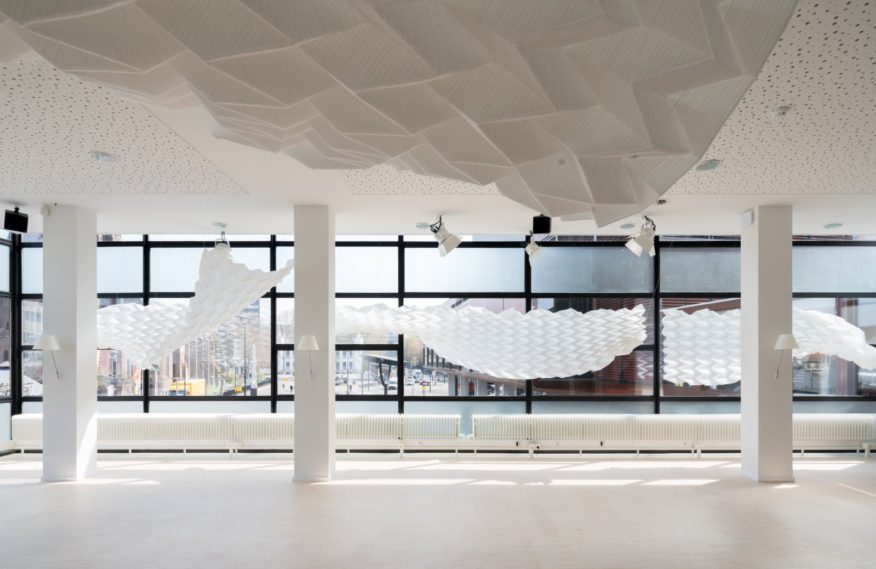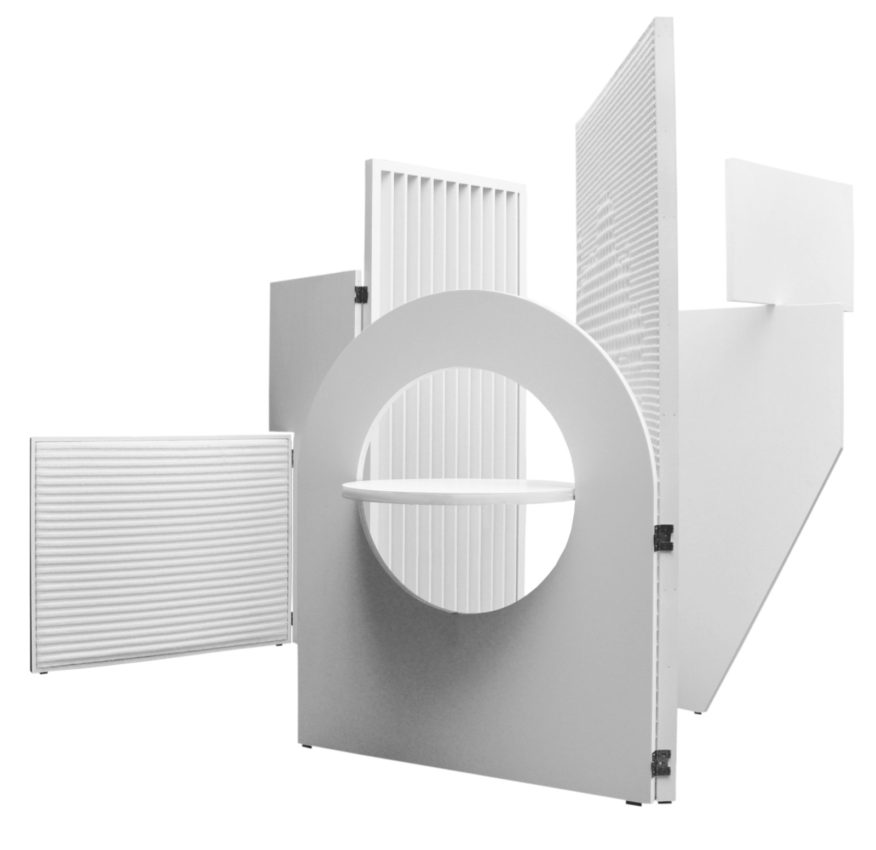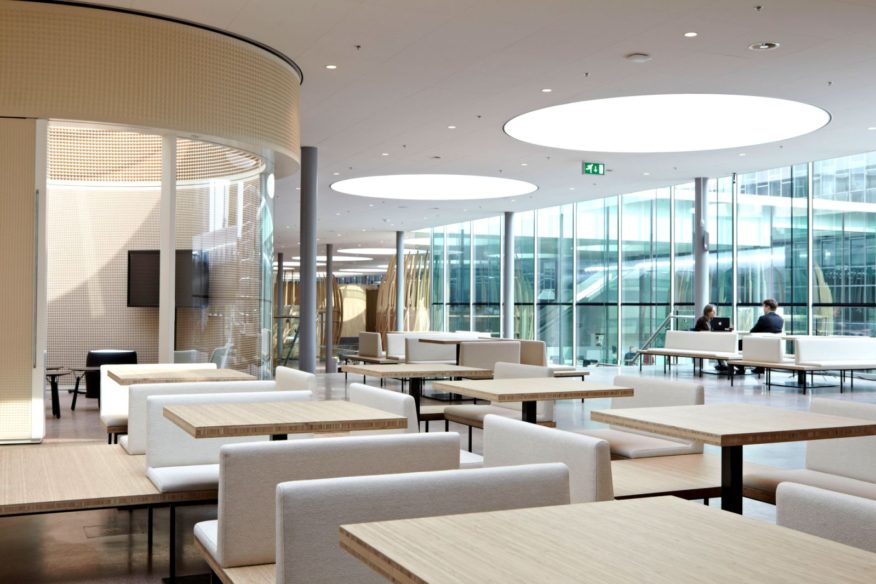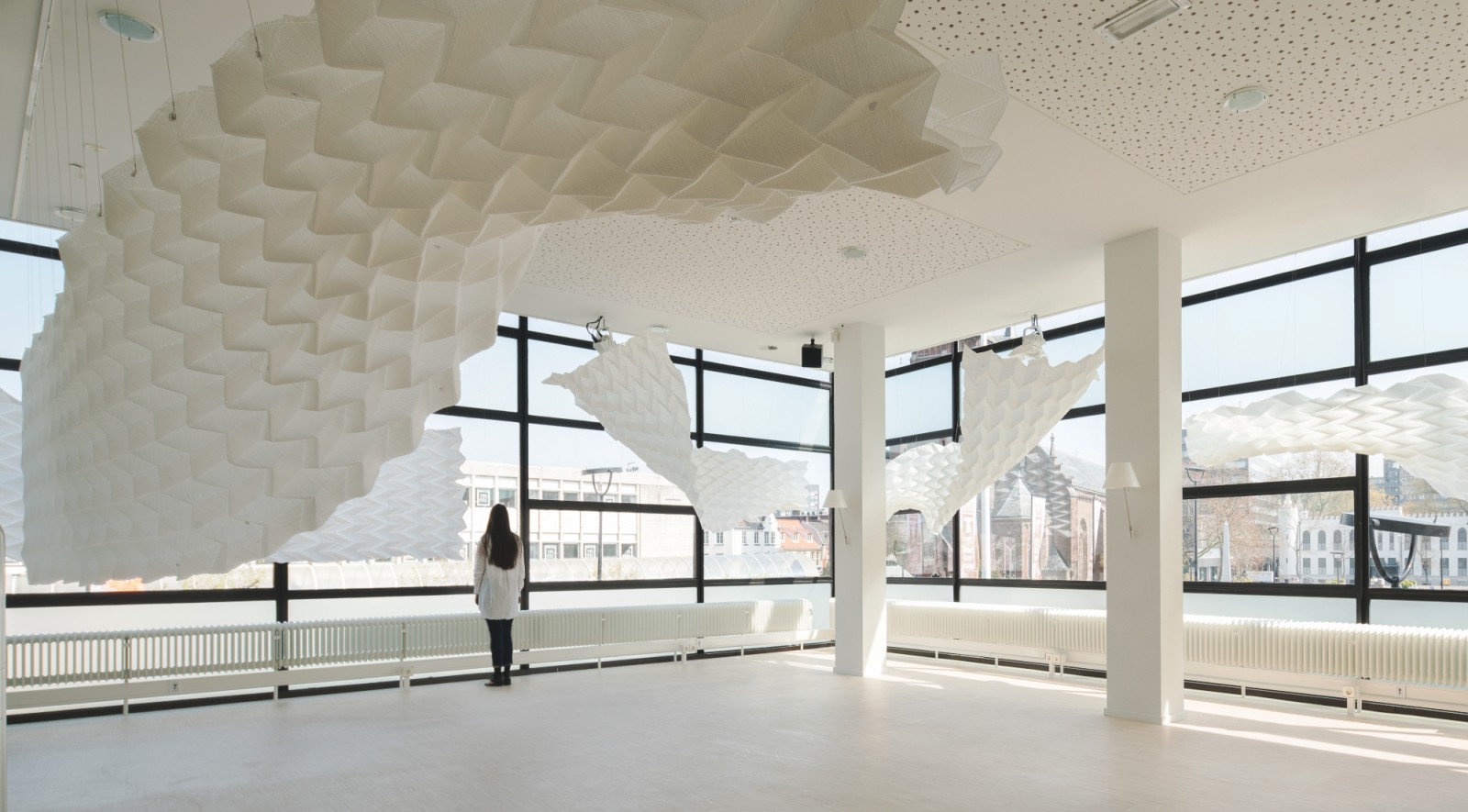
As textile architects, at Studio Samira Boon we also work in an open office space. But to avoid stress and low productivity, sufficient attention has to be paid to acoustics. Specialized in architectural textile applications, we collaborate with (interior) architects to advice on acoustics and spatial solutions, from office space to theatre hall.

While doing material research for offices including Zwarts & Jansma Architects, Tom Postma Design and UNunstudio, we always start from the presupposition that acoustic materials can serve so many more functions than simply sound absorption. Here we would like to share 5 recommendations. They can be used as design guidelines or as inspiration on how to approach acoustics as an integral, original and innovative part of the design.

1. Create identity
The Japanese use the word Miryokuteki hinshitsu or “enchanting quality” referring to the aesthetic appeal and emotional relation to an object. Similarly, acoustic materials can be employed to create identity, for their visual appearance or to make emotional impact. “10.800 Horizons” is a large-scale textile artwork at the Holland Boulevard, a lounge at Amsterdam Schiphol Airport designed by NEXT architects.

As an acoustic element it also strengthens the identity of the lounge. Moreover, translating an abstract, archetypical Dutch landscape into 10.800 horizontal yarns, the acoustic artwork invites to be touched. Well performing acoustic elements are approached as an integral part of the design of an interior. They embody a soul and can really add value to the space.

2. Make it alive
In collaboration with Jarrik Ouburg (HOH architects) and Luuc Sonke we studied how to create spatial diversity and private spaces within a shared environment. This resulted into the development of a series of multi-functional folding screens: ‘Paravent’. Instead of a static acoustic panel, Paravent is an inhabitant with its own character. Each part of the folding screen has its own acoustic properties, functionality and tactility.

3. Trigger the senses
Surfaces reflect, diffuse and distribute sound waves. Their texture is therefore of great influence on the distribution of sound. A folded surface, because of the different angles and inclinations, scatters sound across the room more evenly. This is what gives the textile installations at Theaters Tilburg their unique combination of aesthetic and acoustic damping qualities. The installations of 3D textile are inspired by traditional Japanese origami.

Using new techniques of digital weaving, the folds are incorporated in the surfaces to afford natural movement characteristics as well as effective acoustic diffusion. They may be installed as a colourful, prominent, visual design element, or seamlessly blend in with their surroundings. Acoustic elements become tactile, flexible and influence the way we experience spaces.

4. Rethink functions
How can we create private areas within a mixed used space? At the headquarters of Dutch multinational Rabobank in Utrecht by NEXT architects, an acoustic challenge was the design of flexible workspaces and multifunctional meeting rooms in a notoriously noisy space: the restaurant. The solution consisted in three round, freestanding cylindrical units. These meeting rooms are not divided by hard shells but rather soft furnishings.

Fashioned out of sliding walls, the barrels form a complete sound barrier when closed, as they are covered in 3D textiles inside and out. Installations with convex or curved surfaces are especially beneficial in difficult environments with complex acoustic needs. The shape of the object allows for a complex distribution of sound waves and further acoustic optimisation.

5. Make it movable
The closer the acoustic element is to the sound source, the better the sound absorption. When designing acoustic elements, small adjustments in the position, can lead to large impacts. At the Rabobank headquarters, we were also asked to design flexible, storey-high acoustic wall coverings. Spanning the entire length of the cafeteria, the modular screen system of 3D textile panels can be moved up and down to separate or merge the flexible working areas. The movability of the screens makes them adjust to different sound sources.

Concluding
The era of the open office plans presents new spatial needs and challenges. Acoustic properties have to be combined with the ability to accommodate flexible, collaborative working habits. As the tips and examples above show, this required a flexible and creative approach to the interior design of offices. 3D textiles are an example of a sound absorbing materials that can be designed and engineered to suit the specific needs, while their tactility influences the way experience spaces. Source and photos Courtesy of Samira Boon.

